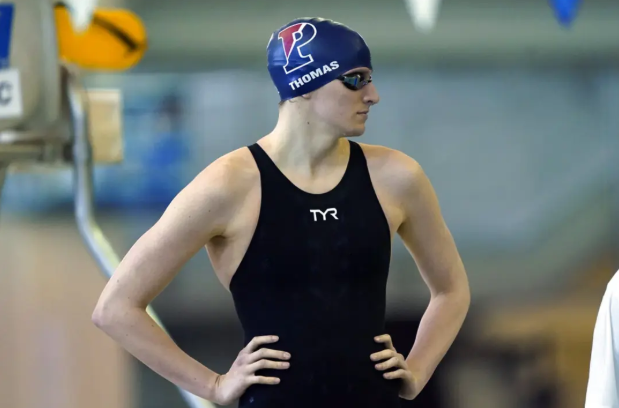Intense controversy arose from many high-competition athletes and audience members, numerous of whom are starting to argue that transgender athletes in women’s sports should not be allowed to compete due to their genetic capabilities not being ‘technically’ fair.
The Issue
The participation of transgender athletes in women’s sports has become a highly debated and polarizing issue in recent years. According to PBS’s article “What science tells us about transgender athletes,” the NCAA reported in December that of its more than 500,000 college athletes, only about 10 were transgender. While some people argue that inclusion is essential for fairness and equality. Many others contend that biological differences may create an uneven playing field. This controversy has sparked discussions in sports, law, and human rights. Due to the constant debate, governing bodies struggling to establish guidelines that balance inclusivity with fairness.
Presidential Order
On February 5, 2025, in an executive order. President Trump issued the “Keep Men Out of Women’s Sports” rule stating, “it is the policy of the United States to rescind all funds from educational programs that deprive women and girls of fair athletic opportunities, which results in the endangerment, humiliation, and silencing of women and girls and deprives them of privacy. It shall also be the policy of the United States to oppose male competitive participation in women’s sports more broadly, as a matter of safety, fairness, dignity, and truth.”
Transgender Supporters
Supporters of transgender inclusion emphasize the importance of allowing athletes to compete in alignment with their gender identity. They argue that exclusionary policies discriminate against transgender individuals and reinforce outdated notions of gender. Many medical professionals point out, that hormone therapy significantly reduces testosterone levels leading to changes in muscle composition and physical strength. However, there are still attributes that do not change.
Sports Governing Bodies
Sports governing bodies have taken different approaches to addressing the issue. The International Olympic Committee previously allowed transgender women to compete if their testosterone levels remained below a certain threshold for a set period. However, recent revisions have shifted responsibility to individual sporting federations. Some organizations, like World Athletics and FINA (the governing body for swimming), have implemented stricter regulations barring transgender women who have undergone male puberty from competing in women’s categories. Szaro, a volleyball player states that “the physical strength and vertical remains regardless of identity.”
In contrast, the NCAA and other organizations have opted for more inclusive policies. These policies allow transgender athletes to compete based on hormone therapy requirements. The discrepancy and rules across different sports have fueled further debate, as athletes and institutions struggle with inconsistencies in policy.
Hormone Therapy
PBS looked into the hormone therapy data for those trans women in the U.S. Army and Air Force to get an idea on what to expect from trans women athletes. The data showed that “even though the performance of trans women dropped after starting gender-affirming hormones, it took two years for their running times to fall in line with women assigned female at birth. The sit-up scores of trans women stayed higher until four years after they started hormones, but their push-up scores remained higher the entire time.”
NCAA Rule Changes
As per President Trumps executive order, the NCAA was forced to change its policies in February to state the following:
- “A student-athlete assigned male at birth may not compete for an NCAA women’s team.”
- “A student-athlete assigned male at birth may practice on an NCAA women’s team and receive all other benefits applicable to student-athletes. Division I leadership is planning to adopt roster limits in place of scholarship limits and new practice squad policies are still in development.”
- “A student-athlete assigned female at birth who has begun hormone therapy (e.g., testosterone) may not compete on a women’s team. If such competition occurs, the team will be subject to NCAA mixed-team legislation, and the team will no longer be eligible for NCAA women’s championships.”
- “A student-athlete assigned female at birth who has begun hormone therapy (e.g., testosterone) may continue practicing with a women’s team and receive all other benefits applicable to student-athletes.”
- “Individual schools have the autonomy to determine athletics participation on their campuses.”
Trans Athletes
Several high-profile cases have intensified the discussion surrounding transgender athletes in women’s sports competitions. For example, collegiate swimmer Lia Thomas became a focal point of controversy after winning gold. Critics argued that her past male physiology and anatomy gave her an unfair advantage. However, her supporters defended her right to compete under established NCAA policies.
Similar debates have emerged in track and field, weightlifting, and cycling. Some female athletes expressing concerns that transgender competitors may displace cisgender women from scholarship opportunities and professional achievements. Conversely, advocates for transgender inclusion stress that these athletes often face discrimination, mental health struggles, and barriers to participation in sports at all levels regardless of policy.
Debate Continues
The issue of transgender athletes in women’s sports is far from settled. Science, policy, and societal views continue to evolve and change. While the debate can be seen as a conflict between fairness and inclusion, it can also pose an eye-opening opportunity to raise questions. Specifically about gender identity, the role of sports in modern society, and inclusion versus discrimination. Rodrigues, a volleyball coach and player stated, “Moving forward, policymakers and sports organizations should (be) striving to create rules that are both logical and inclusive, so everyone is satisfied.”









